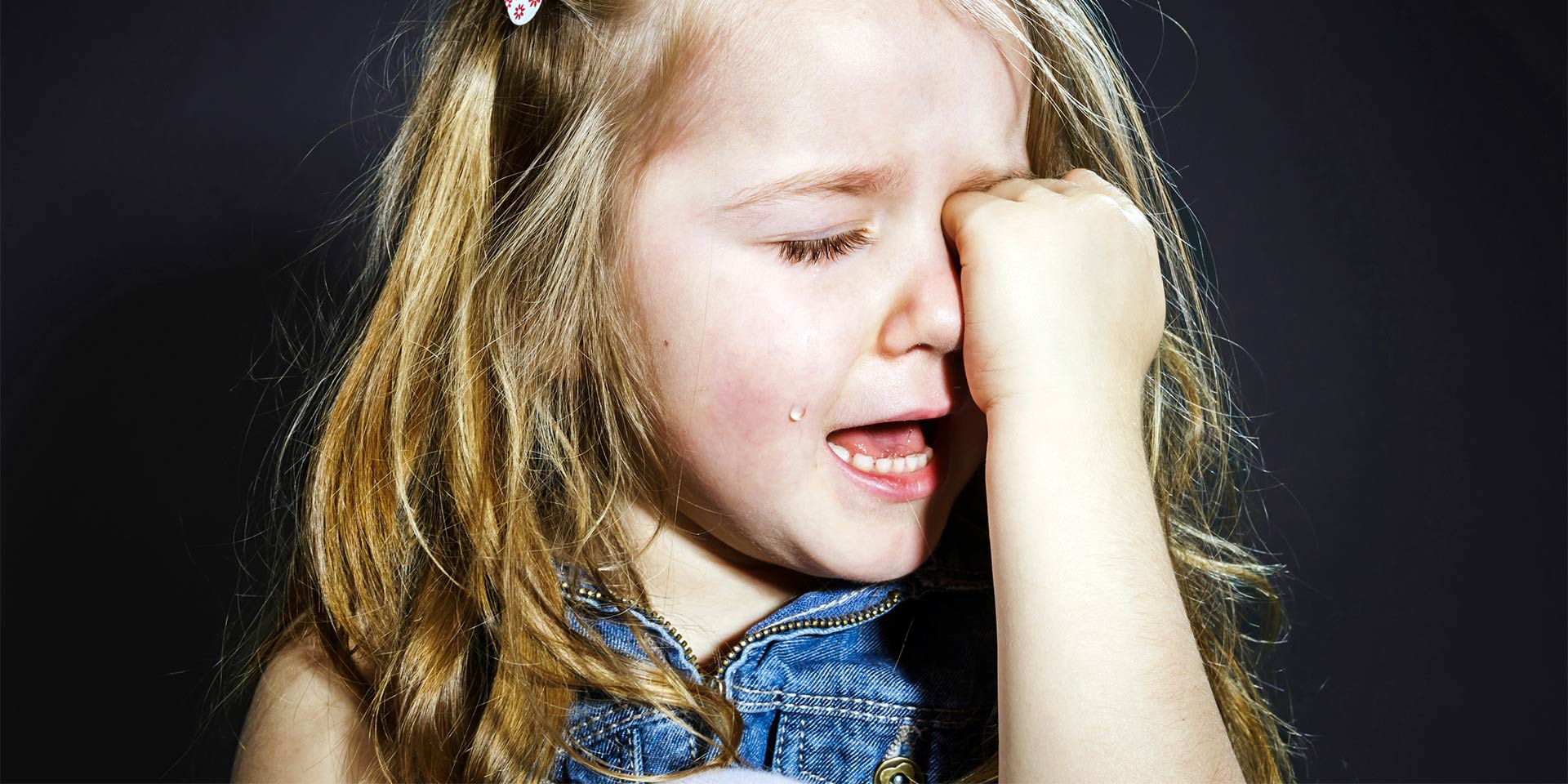In an ideal world, everything would be simple: you, as the father or mother, tell your child, the apple of your eye, to do something and, being perfectly obedient and submissive, they do as they’re told. However, we don’t know if such a world would really be ideal. Nevertheless, for many parents, this resembles a paradise to which they would love to escape for at least a few weeks.
In the real world, for now, things are quite different. The parent tells the child (depending on their age and circumstances) something along the lines of: “I’ve told you a thousand times to stop playing with the power outlet,” or “How many times do I have to tell you to be nice and to listen to me?”
Almost everyone knows that additional measures are usually required to determine the little humans—who have wills of their own, their own tastes, pleasures, and interests—to allow their parents to give them the direction and the meaning they intend to give them. Corporal punishments have always found their way among such measures—from a light spanking, to the cane, whip, sitting on walnut shells, and so many other variants.
In recent years, at least in the Western world, mentalities have started to change in favour of an education which avoids slaps and screams. This cultural transformation is supported by a large segment of the medical body, which states that corporal punishment is harmful to the child and has side effects that are not worth the risk. In what follows, I attempt to synthetically present the body of scientific knowledge regarding the risks associated with corporal punishment.
A grim picture…about corporal punishment
Most scientific authorities seem to vehemently oppose any form of corporal punishment, from a mild spanking to other more serious forms of punishment. For instance, the American Academy of Pediatrics opposes corporal punishment because it has “limited effectiveness and has potentially deleterious side effects.”
In material intended for the general public, psychologist Alan Kazdin stated in 2008 that spanking is associated with a lot of side effects, both in childhood (aggression, poor school results, depression), as well as in adulthood (cancer, heart disease, respiratory diseases). A.J. Zolotor, from the Department of Family Medicine, University of North Carolina (Chapel Hill), claims that corporal punishment “is associated with a long list of adverse developmental, behavioural, and health-related consequences” for the child.
Several studies—which are frequently mentioned in the published literature—have demonstrated the existence of a link between the use of corporal punishment and a variety of behavioural and mental health problems. The introduction of a recent study conducted with the participation of researchers from several E.U. countries mentiones that “meta-analysis of the relationship between corporal punishment and adverse mental health outcomes found that corporal punishment was associated with eleven important childhood behaviours and experiences including increased aggression and anti-social behaviour.”

A meta-analysis is, in short (and simplifying), an analysis of other studies, an endeavour that brings together data from several studies that address the same topic, processing them with appropriate, sophisticated statistical tools, as if they were one single study conducted on a much larger scale.
The previously-mentioned meta-analysis, carried out by Elizabeth Thompson Gershoff, from Columbia University (USA), evaluated the following six behaviours and experiences, measured in childhood: immediate compliance (the child’s compliance with rules imposed by the parent); moral internalisation (internally adopting the values and attitudes that society expects, by switching their focus from the external consequences to a motivation coming “from within”); the child’s aggression; delinquent and antisocial behaviours; the quality of the parent-child relationship; and the child’s mental health in relation to physical abuse. To these six experiences and behaviours, five more were added, measured in adulthood: aggression; criminal and antisocial behaviours; mental health; and the tendency of formerly abused children to abuse their own child or spouse once they reach adulthood.
Analysing the relationship between having been subjected to corporal punishment and each of these 11 variables with appropriate statistical tools, E.T. Gershoff found that there was a statistically significant association for each of them, the effect being small for them of them (adult mental health, adult abuse of one’s own child or spouse, and moral internalisation).
For four of them, the effect was between low and moderate (delinquent and antisocial behaviour in childhood, criminal and antisocial behaviour in adulthood, mental health in childhood, aggression in childhood). For two, the effect was moderate (aggression in adulthood, and quality of the parent-child relationship). For the child’s physical abuse tendency, the effect was moderate to large, and for immediate compliance, the effect was large.
Among these, the only desirable effect, immediate compliance, had the greatest effect, indicating (at least in the short term) good effectiveness of corporal punishment in generating the behaviours expected by the parents (or other caregivers). However, this benefit is accompanied by 10 undesirable experiences and behaviours: reduced moral internalisation (the child does not acquire the values and attitudes that the parent would like); the child’s aggression and their delinquent and antisocial behaviours increase; mental health in childhood is affected; there is a risk that the punishment will turn into physical abuse; the adult child will tend to have increased aggression and criminal and antisocial behaviours; their mental health as an adult will be affected; and there will be an increased risk that, in turn, the adult child will physically abuse their own child or spouse. These are the results of the meta-analysis of E.T. Gershoff, cited so far by other researchers (according to the Google search engine) no less than 1,491 times.
…but not the full picture
The numerous voices that cite (most of the time in a very concise manner) the conclusions of the American researcher often seem to ignore the limitations of the study, the clarifications, and the observations of the author regarding the interpretation of these data. “First and foremost” (in the words of E.T. Gershoff), “correlations do not prove causation.”
Because these meta-analyses are based primarily on correlational studies, parental corporal punishment cannot be identified definitively as the cause of these child behaviours and experiences, with the exception of immediate compliance. For some of the child behaviours considered in the meta-analyses, it is conceivable that the causal direction is reversed from what might be expected, such that children are driving the associations (e.g., aggressive children tend to elicit more corporal punishment from their parents).
In addition, there might also be a third variable that predicts both parents’ use of corporal punishment and child behaviours, such as parents’ inconsistent style of discipline[1]. “Meta-analyses will never be able to rule out completely such alternative explanations.” The researcher also drew attention to the issue of the validity of the conclusions of some retrospective studies on childhood behaviours based on questions asked in adulthood.

Three years after the study of E.T. Gershoff, two American researchers, Robert Larzelere (from the University of Oklahoma) and Brett Kuhn (from the University of Nebraska Medical Center) conducted another meta-analysis, integrating 50 years of research in the field of child discipline, from a comparative perspective: the study (which identified 26 relevant articles) compared the results of physical discipline with the results of other methods and tactics used by parents for discipline.
In the introduction, the two authors drew attention to methodological issues and the essential nature of a comparative approach, building an analogy with cancer patients who undergo radiation treatment: patients who had experienced radiotherapy in the previous year were more likely to have cancer symptoms than those who did not receive (or did not need) radiation treatment. Longitudinal studies such as those used in Gershoff’s meta-analysis would indicate that radiation treatment is associated with an increased incidence of cancer symptoms. Of course, they explained, the initial problem (cancer) is the causal factor that explains both the corrective intervention (radiation treatment) and the subsequent result (cancer symptoms). It was not the radiation that caused the cancer, but it was the cause of the observed association.
Associations between negative outcomes and corrective interventions are typical, not only for disciplinary interventions by parents, but for all corrective interventions in general: those conducted by doctors (for example, radiation treatment and medical results), by psychologists (couple counselling), by educators, or by parents. In other words, “if spanking should be banned based on its association with subsequent aggression, then hospitals should be banned because their patients die at a higher rate than people residing elsewhere.”
Continuing the analogy, the two authors state that if we apply E.T. Gershoff’s study in the case of radiation treatment of cancer patients, then two-thirds (65%) of the studies related to radiation treatment would have mentioned excessively high doses of radiation (excessive physical punishment, physical abuse), 58% would have been cross-sectional studies (inadequate for establishing cause-effect relationships), and only 4% of them would have taken into account the presence or severity of cancer (the presence and severity of inappropriate behaviours, which punishments try to correct). “A meta-analysis of radiation treatment using predominantly correlational studies would come to the same conclusions as Gershoff’s (2002) meta-analysis, specifically that radiation treatment is consistently linked to detrimental outcomes.”
Conditional spanking[2] was more strongly associated with reductions in noncompliance or antisocial behaviour than 10 out of 13 alternative disciplinary tactics[3] (the contrast resulting from comparison to other disciplinary solutions is medium for noncompliance and small for antisocial behaviour). In the case of regular corporal punishment[4], no relevant differences were observed compared to alternative tactics, except for a 1975 study which found that corporal punishment was more effective in the case of drug use. Alternative tactics proved superior to physical punishments only in comparisons in which physical punishments were predominantly used or in which these were excessively severe.
Corporal punishment: the latest meta-analysis
Somewhat surprising is the lack of attention paid to the more recent meta-analysis in the field, published in 2013 by Christopher J. Ferguson, from Texas A & M International University. In the introductory part of the study, he extensively discussed the multiple methodological issues raised by E.T. Gershoff’s meta-analysis and many of the studies which underlie it: a) conflation of spanking with more severe forms of corporal punishment (as if it were a unique and uniform reality); b) the temporal order of spanking and the negative results attributed to it (only 13% of the studies included in Gershoff’s meta-analysis were longitudinal in nature); c) the statistical problem (relatively technically complicated) of controlling third variables, which tend to artificially augment the size of the effect attributed to a certain variable; d) overreliance on subjects’ memories (“retrospective reports of past CP may ultimately say more about the respondent’s current psychological status rather than accurate memories of disciplinary acts, which took place years or decades earlier”); e) shared method variance (many of the studies included in Gershoff’s meta-analysis refer to the same person [the punished one] describing both corporal punishment and the impact on the child, which can lead to artificially inflated correlations). Starting from these considerations, C.J. Ferguson proposed a meta-analysis based only on longitudinal studies, which would avoid many of the methodological problems of previous studies.
What did C.J. Ferguson conclude based on longitudinal studies? “The current best evidence suggests that spanking or CP has a small or trivial but statistically significant impact on negative outcomes, at least for externalising and internalising symptoms and cognitive performance. Externalising problems referred to behaviour problems related to aggression, rule breaking, antisocial and oppositional behaviours. Internalising problems referred to issues related primarily to depression, anxiety and stress. The only exception was for spanking children under the age of 7 which was non-significant for externalising symptoms.”
“Statistically significant” in this context means that the probability that an association (such as that between corporal punishment and a lower cognitive outcome) comes from pure chance is very small (typically, when the theoretical probability of observing a certain association or result by pure chance is less than 5% it is considered to be “statistically significant”). In other words, the observed impact is quite certainly associated with corporal punishment, but it is “small or insignificant” (trivial).

What does a “small or insignificant” impact mean in practical terms? It means that if there is a negative impact of spanking or corporal punishment, this is small or insignificant, probably less than 1%; in any case, less than 5% of the observed negative outcomes can be attributed to these disciplinary measures. However, it must be said that the author still has two important observations to make: firstly, it must not be understood somehow that these results can be generalised to more severe forms of corporal punishment or to physical or sexual abuse, because these were not included in the study and for these the results seem to be very different. Second, “this does not mean that scholars should endorse spanking; there may be reasonable arguments to suggest that spanking confers no particular benefits and thus might easily be replaced with alternative discipline strategies.”
Dogmatic and unnuanced?
An honest analysis of the data indicates that—as shown by C.J. Ferguson—corporal punishment applied moderately and only under certain conditions has a very limited negative impact on the child’s behaviour. At the same time, since there are less unpleasant alternatives (for both the child and the parent), there is no reason to encourage this kind of discipline. In the same way, however, scientific data does not justify a dogmatic attitude in which simply spanking a child becomes an unforgivable sin.
The same C.J. Ferguson summarises the complex issue of these results in the context of political interventions in various geographic areas and in that of opinions circulated in an often heated public space: “Indeed too much of the debate on spanking and CP assumes that those practices are either invariably bad or invariably acceptable for children and may miss important nuances about their use. In an atmosphere in which the discussion on a topic such as this is politically charged it may be difficult to address spanking/CP in this more nuanced and complex manner, but our understanding of this phenomenon would benefit from such an approach. For instance the degree of influence of spanking and CP may relate to the context in which the discipline is rendered, including the warmth and general positivity of the family environment. Although some studies have begun to examine such relationships (…), these are in relatively short supply (…). Thus it may be mistaken for scholars to consider spanking as either invariably harmful or always acceptable, but its effects may vary by the contexts, age, and manner in which spanking is used.”
You may also be interested in reading: Disciplining children creates distance. True or false?
In addition, E.T. Gershoff—whose study is so widely used to dogmatically preach the catastrophic effects of corporal punishment (somewhat ignoring the context and the researcher’s conclusions, as well as the methodological problems that affect her conclusions)—wrote: “Like the majority of statistical analyses, meta-analyses examine aggregates of people; the association between corporal punishment and the particular behaviours of any individual child may or may not follow the patterns found here.
The presence of corporal punishment may make certain behaviours more likely but clearly not inevitable[5]. Other complex aspects of the parent–child relationship and context probably play an important role but are not yet well understood. The fact that over 90% of Americans are spanked as children (Straus, 1994a; Straus & Stewart, 1999) and most are not violent and criminal adults contradicts an assertion that corporal punishment necessarily has negative effects on children.”
Robert Ancuceanu is a doctoral professor at the Faculty of Pharmacy within the “Carol Davila” University of Medicine and Pharmacy in Bucharest, Romania.




















